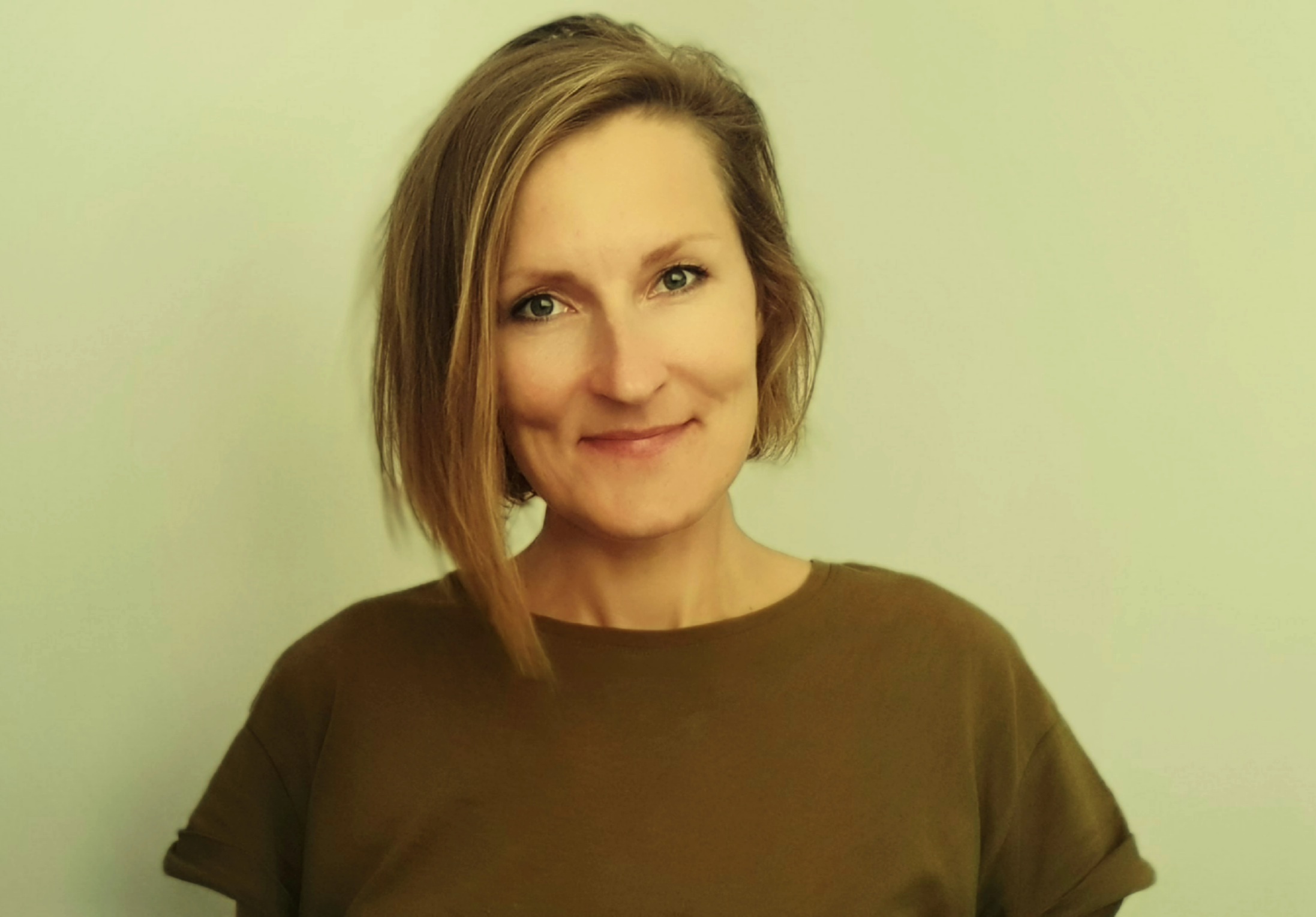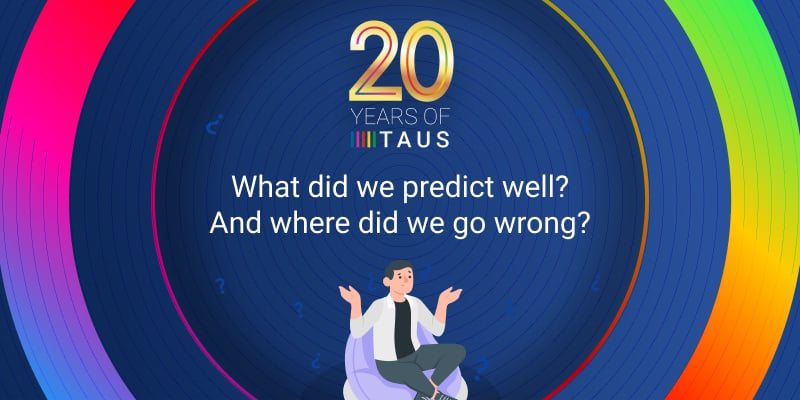The TAUS World-Readiness Index

Which factors and ratios need to be taken into account to set a World-Readiness Index as a standard way of measuring and benchmarking a company’s or organization’s success in engaging with their global audience?
TAUS has launched the new theme of World-Readiness. We have spoken enough about the localization factory and translation blues. It’s time we focus on the ultimate mission of the global language sector: helping the world communicate better!
A few attempts have been made already to frame this brand new topic. On 1 November 2019 we kicked off the discussion with a blog article Towards a New Translate Benchmark. This was followed by Jaime Punishill’s call for strategic business thinking in our industry, and then we zoomed out to look at World-Readiness in the context of Translation Economics.
Now we are calling for a broad industry conversation with the goal of developing a framework for measuring the success of globalization and localization and capturing that in a World-Readiness Index.
The World-Readiness Index is crucial for a maturing language and global content industry. It will help language service and technology providers as well as buyers of translation and localization to address and resolve barriers to global content delivery and to measure and benchmark the impact of their globalization investments in a standard, open way.
Events and actions
Here is a list of events and actions that can bring us closer to the goal of a standard World-Readiness Index:
1. World-Readiness Conversation, at the TAUS Global Content Conference in San Jose on March 10-11. Hosted by Paula Shannon and Jaap van der Meer. Speakers: Bert Vander Meeren (Google), Katell Jentreau (Netflix), Teresa Marshall (Salesforce), Anna Schlegel (NetApp), Björn Rettig (PayPal), Aiman Copty (Oracle), Sasan Banava (Uber) and Francis Tsang (LinkedIn).
2. World-Readiness Contest and Award, at the TAUS Global Content Conference in San Jose on March 10-11. Hosted by Jaime Punishill. Contestants include: Shelby Cemer (Microsoft), Robert Etches (Exfluency), Spence Green (Lilt), Isabelle Weiss (Alpha CRC), Jack Welde (Smartling), Mimi Hills (Vmware), Heather Shoemaker (Language I/O), Josh Gould (thebigword) and Paul Danter (RWS Moravia).
3. World-Readiness Articles. We invite stakeholders in the industry to contribute to the online debate by submitting their thought pieces to be published on the TAUS website.
4. Defining the World-Readiness Index and a Language Data Industry Policy at the TAUS Industry Leaders Forum on June 9 and 10 at TAUS HQ in Amsterdam.
We ask everyone engaging in our discussions about World-Readiness - the speakers in the conversation at the TAUS conference, the contestants for the award and the online debaters - to read this article and consider the factors that determine World-Readiness and help us expand and elaborate on them.
Global Coverage versus World-Readiness
It’s obvious that there is a huge gap: the world counts some seven thousand languages and most of us in the business world translate into only a dozen or thirty languages. Some larger companies reach sixty languages and only a few go as high as 120 or slightly more languages.
To calculate a global coverage score we can simply divide A by B, whereby:
A = # of languages spoken by the company or organization multiplied by the number of speakers of these languages, and
B = # of locales or geographies a company or organization needs to cover to maximize its global market share, multiplied by the number of speakers in those languages.
A company can ‘speak’ 25 languages and cover half of the world population, but that half may not match exactly with their target locales and geographies. A pure-play Internet company has a very different target market than a company that ships physical goods. Both factors A and B require a much deeper analysis for companies to determine the potential and impact of their globalization and localization efforts. Besides, global coverage does not say much about market penetration, brand awareness and loyalty. Engagement with global customers and citizens needs to be measured by unique visitors, click-through-rates, sales qualified leads, and many more factors and ratios.
The World-Readiness Index we are thinking of therefore is much more sophisticated and needs a deeper analysis.
What Determines World-Readiness
So what really determines World-Readiness? Which factors and ratios need to be taken into account to set a World-Readiness Index as a standard way of measuring and benchmarking a company’s or organization’s success in engaging with their global audience?
We offer five main factors to be considered for the calculation of a WR Score on the World-Readiness Index.
1. The Scalability Factor
Scalability is an economic factor. It is similar to the global coverage score mentioned above, but with a much deeper business analysis.
World-Readiness means that we speak our customers’ languages no matter which language that is. The question then is how do we scale up to hundreds or a thousand languages? In our Translation Economics article we refer to the mixed economic model that the translation industry finds itself in at the moment: on one side the traditional cascaded supply chain and on the other side the modern ‘free machines’ model. In the traditional economic model each additional locale and language translation can be as costly as the first language translation. In the modern free machines model we are approaching a near zero marginal cost model, which means that once the infrastructure is in place we can expand into new locales and languages at a very low additional cost.
The only way to scale up and reach more customers and citizens in more languages is through automation. The economic factor in the World-Readiness Index must take into account the level of automation, both in translation production (machine translation) and in translation management (workflow automation). The goal is (near) zero marginal cost for each locale and language added. The Scalability Score in the World-Readiness Index may be expressed in the average cost per word or in a more sophisticated KPI like total average edit density.
The Scalability Factor however does not stand alone. It must be considered in association with the Quality Factor, the Interoperability Factor and the Data Factor.
2. The Quality Factor
The goal to reach zero marginal cost for each additional locale and language must be balanced with our pursuit of optimal user satisfaction and adequate translation quality. The Quality Factor is therefore the second factor that goes into the World-Readiness Index.
Quality must be seen in a broader perspective than the narrow scope of linguistic quality and the definition of one quality that fits all content, all audiences and all purposes. The Quality Factor in the World Readiness Index stands for a dynamic approach to quality based on content and persona profiling and a data-informed and data-driven metrics. In the Modern Translation Pipeline (see chapter 3 in the Nunc Est Tempus book) we differentiate three workflows and quality levels - FAUT, PEMT and Transcreation - based on data-informed content profiling. TAUS offers DQF, the Dynamic Quality Framework, as a standard way of measuring and tracking global content delivery according to these two quality levels.
The Quality Factor in the World-Readiness Index can be expressed in an average language quality score in combination with a KPI for user satisfaction and customer engagement.
3. The Interoperability Factor
In an open and connected world in which almost all information and content is free and shared on public websites and social platforms, it is crucial that systems and tools interact without friction and loss of information. The Interoperability Factor is therefore the third factor that goes into the World-Readiness Index.
To be truly world-ready a company or organization must ensure that all content it owns and earns and content that is shared through social media can flow through the core global content delivery pipeline. Gates that remain closed for content to be localized through the most efficient workflow can cause steep increases in costs, delays, revenue and opportunity loss. By the same token, the workflow must be API-friendly and allow best-of-breed MT systems in all domains and languages, as well as other relevant tools to integrate. Ensuring interoperability is not an easy task for globalization and localization managers who must choose their preferred vendors from a pool of thousands of large and small agencies and their tools from hundreds of different technologies on offer.
The Interoperability Factor and how it is measured is a tough nut to crack in the World-Readiness Index.
4 The Language Data Factor
Data are the fuel in localization and globalization and therefore the Language Data Factor deserves its own place in the World-Readiness Index. A company or organization that does not have a solid language data strategy will lag behind in globalization and localization. The Modern Translation Pipeline (as outlined in Nunc Est Tempus, chapter 3) drives on data, both for translation production and for translation management. The data feedback loop is essential to the learning of the MT engines as well as for the learning of management tasks. The goal of zero marginal costs is totally dependent on a well-thought through and soundly implemented data strategy.
The Language Data Factor has different aspects that weigh in on the scores to be attributed to the overall World Readiness Index. One of them is the data transformation question: is there a process in place to cluster, clean and anonymize data for customization and personalization of machine translation? Another one is the provenance question: does the company or organization have a clear policy around sharing of data. Yet another concern is the immediacy of the data feedback loop as the state-of-the-art in the industry today is already real-time learning and adaptation.
The score of the Language Data Factor is likely to be more qualitative than quantitative.
5. The Business Impact Factor
Finally we propose the Business Impact Factor as the fifth and overarching factor with the following rationale: you may score well on Scalability, Quality, Interoperability and Data, but if all of this does not have a Business Impact, then it’s useless. The obvious score for the Business Impact Factor is total revenues from all non-native language markets divided by the total cost of localization and globalization.
How to Apply the World-Readiness Index
Companies and organizations may have internal KPIs to track costs and gains, but what’s the use of measuring if you measure only against yourself? You will miss important benchmarks: validations, which are good, or warnings that may put your company or organization at risk.
We envision the World-Readiness Index as a publicly available record where companies can log their World-Readiness Scores and get their benchmarks. The World-Readiness Index always applies to the company or organization that operates across borders. Language service providers and translation technologies may use the World-Readiness Index, but always from the perspective of one of their customers. Unless of course they are exclusively considering the localization and globalization of their own company’s product and content.
What’s Next?
We ask everyone who is interested in this endeavor to contribute. The opportunities to contribute are abundant:
- Join the TAUS New Year’s Webinar on January 14 to discuss the World-Readiness Index with TAUS and some of the supporters and board members.
- Submit a thought piece to the TAUS blog series.
- Join the live discussions with heads of globalization from among others Microsoft, Google, PayPal, Oracle, Netflix, Salesforce, Uber at the TAUS conference in San Jose.
- Participate in the World-Readiness Contest at the TAUS conference in San Jose.
- Join the TAUS Industry Leaders Forum in Amsterdam on June 9 and 10 where we hope to have conclusive discussions on the definition of the World-Readiness Index and the definition of an industry Data Policy.
… or just drop us an email if you’d like to learn more.

Jaap van der Meer founded TAUS in 2004. He is a language industry pioneer and visionary, who started his first translation company, INK, in The Netherlands in 1980. Jaap is a regular speaker at conferences and author of many articles about technologies, translation and globalization trends.
 by Dace Dzeguze
by Dace Dzeguze

